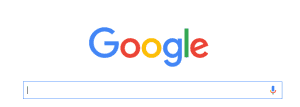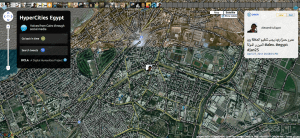Think back. Do you remember a time when the internet did not exist?
not exist?
I don’t. I have lived my whole life with the convenience of information at the click of a button. What does “eidetic” mean… I’ll google it! What is the smallest country in the world? There’s a Wikipedia page devoted to it. The World Wide Web has become a treasure trove of fast and easy information.
When visionary Theodor Nelson wrote of such a thing in 1965 he imagined an “open-ended, non-linear system for organizing, interlinking, and accessing information. Before the internet was even conceived of, Nelson sketched out an ever growing, immense collection of information that could not be held within a single medium.
Presner, Shepard, and Kawano are following in the footsteps of visionaries like Nelson, imagining more engaging and dynamic ways to configure knowledge. By developing the idea of “HyperCities,” they are going beyond simply typing a word in a box and receiving the most preferred answer to that question or looking up a map and seeing a 2D representation. They are creating a mode by which a person can immerse themselves in a particular place, at many different times and from many different perspectives. Their goal is to collect and visualize “ever more layers of geographic or place-specific data” (17) in a yet as unheard of medium. They also wish to embrace the ideal of “thickness” of information, incorporating “extensibility and polyvocality: diachronic and synchronic, temporally layered, and polyvalent ways of authoring, knowing, and making meaning” (18). There would no longer a single, easy answer, but rather a rich supply of stories, narratives, images, and ideas surrounding a particular place.
In their words:
“Thick maps are conjoined with stories, and stories are conjoined with maps, such that ever more complex contexts for meaning are created” (19).
Presner, Shepard, and Kawano recently created a HyperCity of Cairo Egypt that allows the viewer to interact with the “voices of Egypt” as Kawano calls it. The map is a visual representation of tweets and their location, live.
To investigate this particular project, check out this link!!
As a budding music historian it is essential to consider both how to accumulate and how to display information. Presner, Shepard, and Kawano present new ideas which are motivated by respectable goals. They are attempting to provide information that cannot be represented in a traditionally linear fashion and also to embrace the immensity of all of the possible “truths” of history. In their theorized model there is less emphasis on a singular “correct” version of history, but rather an emphasis on deriving meaning and new connections from a new approach to organizing information.
” The Fundamental idea behind HyperCities is that all stories take place somewhere and sometime; they become meaningful when they interact with other stories” (http://www.brainpickings.org/2011/04/28/hypercities/).
The merit of such as system is that it depicts a greater range of ideas and information about a places “history.” Compiling more formats of information other than simply so-called “facts” allows historians to create more connections and webs of information which in turn create a more dynamic, multifaceted picture.
The flaw that this system contains is simple:
The more room you leave for interpretation and conflicting ideas, the more ambiguous the “truth” becomes. Every history textbook or reference material has a bias, and while that bias is generally seen as a weakness it also serves to focus the ideas and information into one generally cohesive work. There is no way to know everything about every time with definitive proof, and this system may sacrifice clarity in favor of breadth. Especially in the realm of music, there is almost infinite room for subjectivity and new interpretations of the same information, so allowing more conflicting ideas to exist in the same place may not always provide a clear image.
That being said, I think that this mental exercise is incredibly valuable to the field of music history. Since we are dealing with art over the course of centuries, any and all information is important and having a means of collecting, communicating, and collaborating on this information is remarkable, if complicated, endeavor. While a system like HyperCities cannot be the only source upon which we base our learning, it is definitely one that could reshape the way we think about and visualize history.

You must be logged in to post a comment.